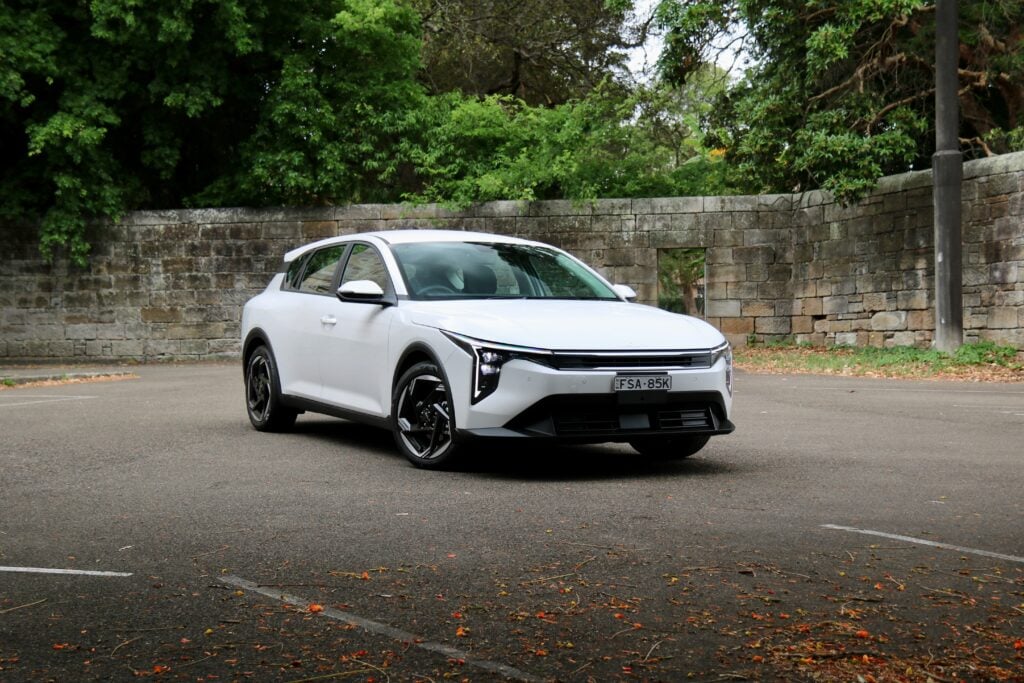
Things we like
- Assertive new look
- Worthwhile added safety tech
- Fully digital instruments
- Easy to drive and park
Not so much
- The best one – GT – is dead
- Meagre powertrain
- Prices up quite a bit
If you want a very small car with a relatively small price, the Kia Picanto is just about the only worthwhile model you should look at.
Sadly, the pared-back 2024 range sees the best version – the GT – axed, but at least the two remaining variants have their own positives.
JUMP AHEAD
Pricing and features
The updated Kia Picanto line-up sees revised naming for the base model Sport (previously S), while the GT-Line is now the top bopper.
| Model | Pricing | Change |
|---|---|---|
| Picanto Sport manual | $17,890 | up $1600 (Picanto S) |
| Picanto Sport auto | $19,490 | up $1600 (Picanto S) |
| Picanto GT-Line manual | $19,690 | up $1950 |
| Picanto GT-Line auto | $21,290 | up $1950 |
| All prices exclude on-road costs. | ||
Sport grade is 10 per cent dearer than the S was, with pricing from $17,890 plus on-road costs for the five-speed manual and $19,490 plus on-roads for the four-speed auto.
The Picanto Sport makes do with auto halogen headlights (although they do have auto high beam), halogen daytime running lights, halogen tail lights and 14-inch alloy wheels. Inside, there’s cloth upholstery, fake leather trim for the steering wheel and gear shifter, and the carryover 8.0-inch touchscreen with Apple CarPlay and Android Auto (respectively wired and wireless), plus there’s a USB-A and USB-C port, new digital instrumentation for the driver with a 4.2-inch trip display, and manual seat adjustment.
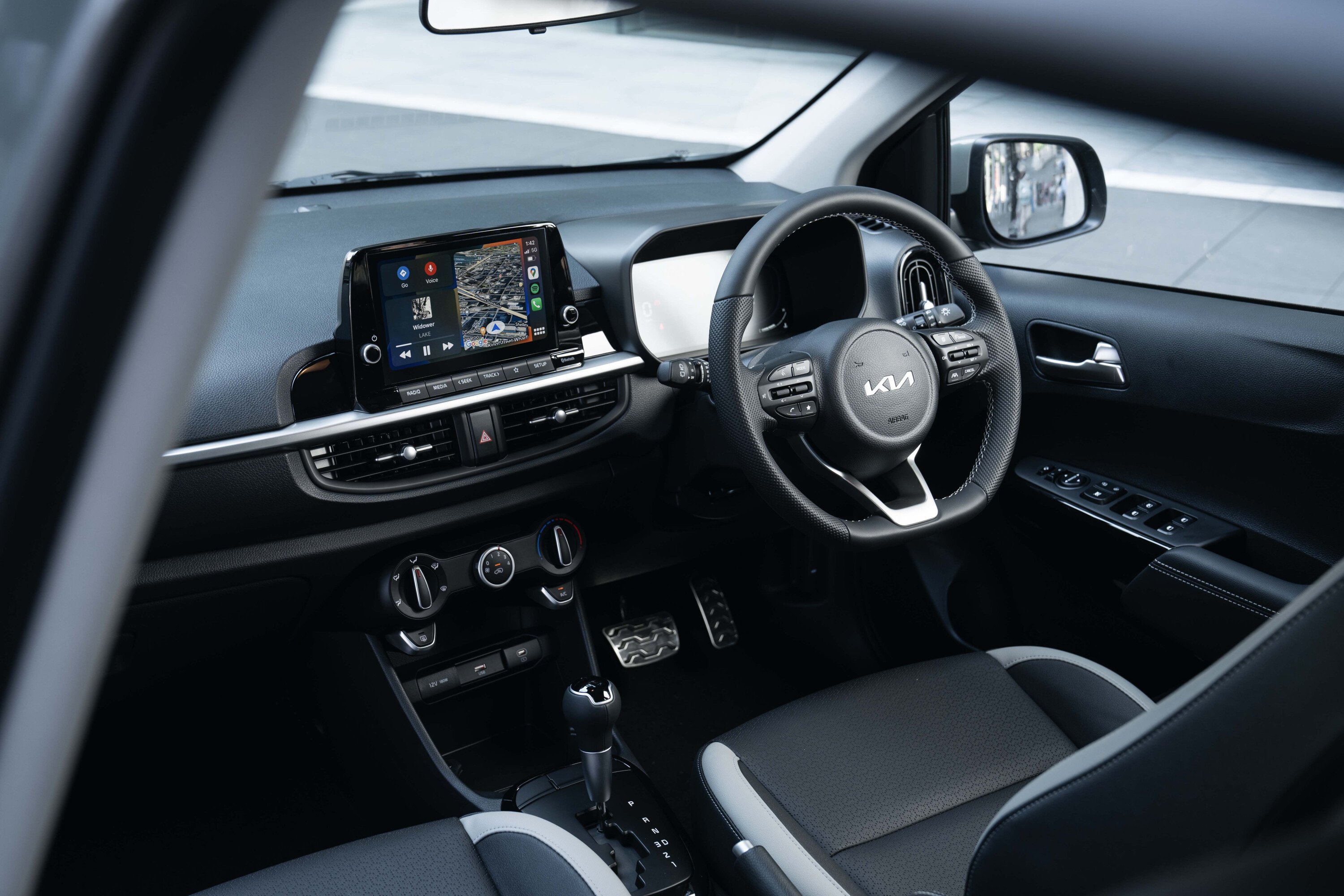
It may not look much fresher inside but the new digital clock-style instrumentation makes a big difference for at-a-glance speed adjustments. Shame the steering wheel adjustment remains tilt only.
The GT-Line steps up by $1950 across manual ($19,690 plus on-roads) and auto ($21,290 plus on-roads) options but the extra spend nets you a heap more gear, including LED headlights, LED daytime running lights (including front light bar), LED tail-lights (but halogen indicators), and you get 16-inch alloy wheels to go with the sporty GT-Line exterior trim.
Inside, the GT-Line adopts synthetic leather upholstery, a different steering wheel, and extra driver’s seat adjustability (six-way manual). Rear-seat occupants get a USB-C charge port, too.
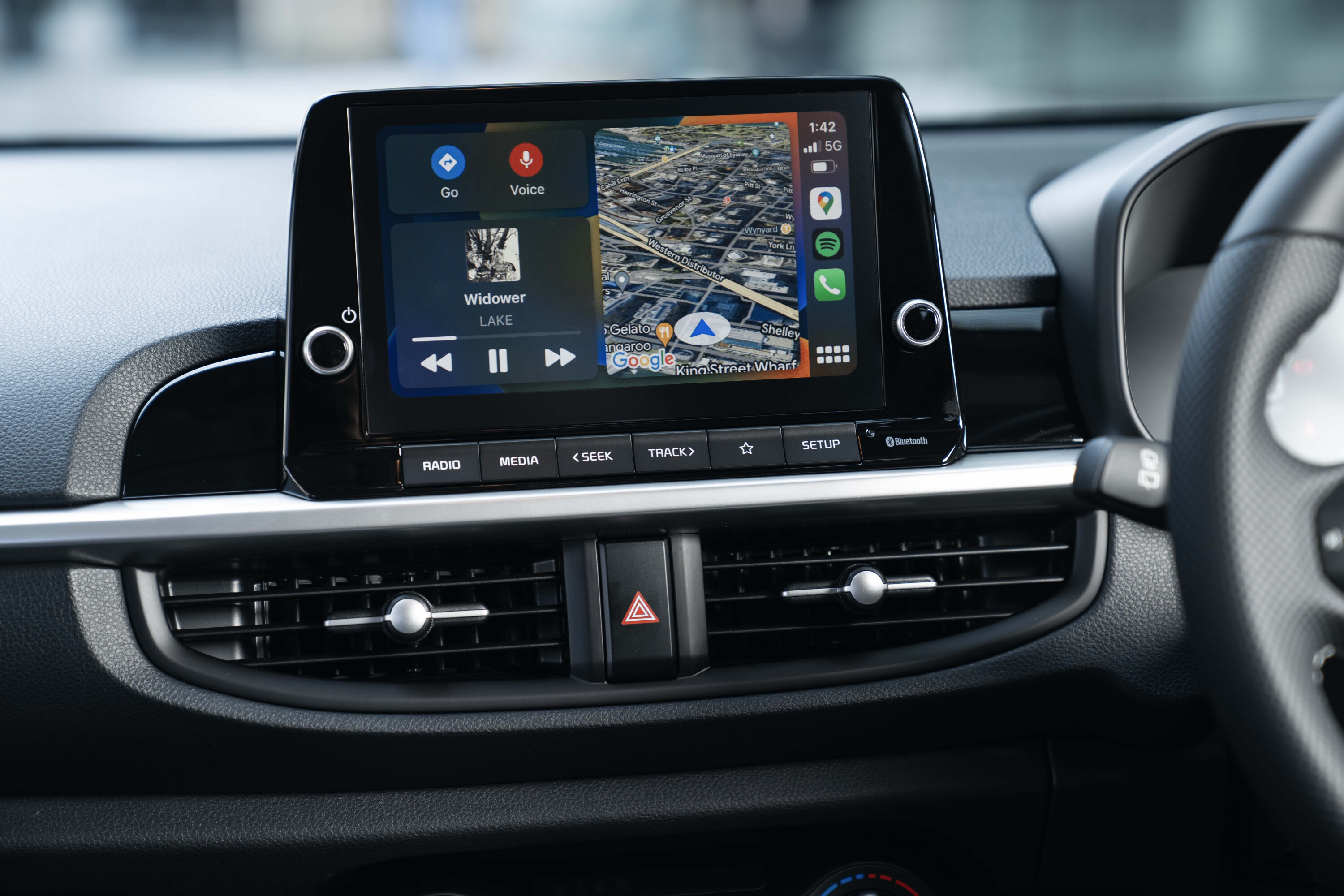

Honestly, the better lighting, the smarter exterior look and nicer interior trim should be enough to get you to sacrifice an extra takeaway almond latte or two if you’re financing the car. It’d be a worthwhile reallocation of funds.
A big selling point if you’re maybe cross-shopping a Picanto against a small used car is the ownership program.
Kia backs its range with a seven-year, unlimited-kilometre warranty, with up to eight years of roadside assistance, plus seven years of capped-price servicing, with intervals set every 12 months or 15,000km.
Capped-price service pricing for the 2024 Kia Picanto has not yet been published but for reference, intervals for the 2023 version cost between $285 and $511. They average out at a fairly pricey $407 per service, meaning a total of $2850 for all seven in the capped plan.
Safety
There’s no current applicable ANCAP rating for the Picanto, despite the fact it recently wore a four-star score which expired in December 2023.
Even so, Kia has added a few new items to the mix on top of the existing AEB, including a lane-keep assist function, blind-spot monitoring and rear cross-traffic alert.
It still has regular cruise control rather than adaptive, and while there’s a reversing camera and rear parking sensors, no grade has front sensors. Airbags? Six; dual front, front side and full-length curtain.

On the road
What a shame the excellent little engine from the GT is gone, because what’s left to carry the mantle for the Picanto is not the greatest little powerplant.
My time was spent in the GT-Line manual model, and look, the 1.2-litre naturally aspirated petrol is adequate but never goes beyond that. It offers the level of zippiness at lower speeds you’d expect from a little car like this, but you’ll need to rev it to get the best out of it.
If you do rev it hard, it offers some reward. But there’s no denying that this is an engine better suited to low-speed commutes than it is for the Sunday cruise.

The five-speed manual feels a ratio short, especially at freeway pace where it sits at 3200rpm doing 110km/h in fifth. And the shift action is long, making it feel a bit more old-school than other manuals that remain on the market.
Its throw is light, though, and the clutch is very manageable in terms of weighting – just be aware that anyone with bigger feet (I’ve got size 12s) may find their toes getting a bit tangled up under the dashboard when shifting.
With the 16-inch rims wrapped in Nexen rubber, this little car handles itself pretty well. The GT-Line doesn’t get any changes to suspension or steering calibration, but it still offers those who like to do more than just commute the opportunity to have some fun in the twisties, even if those twisties are just intersections and roundabouts.
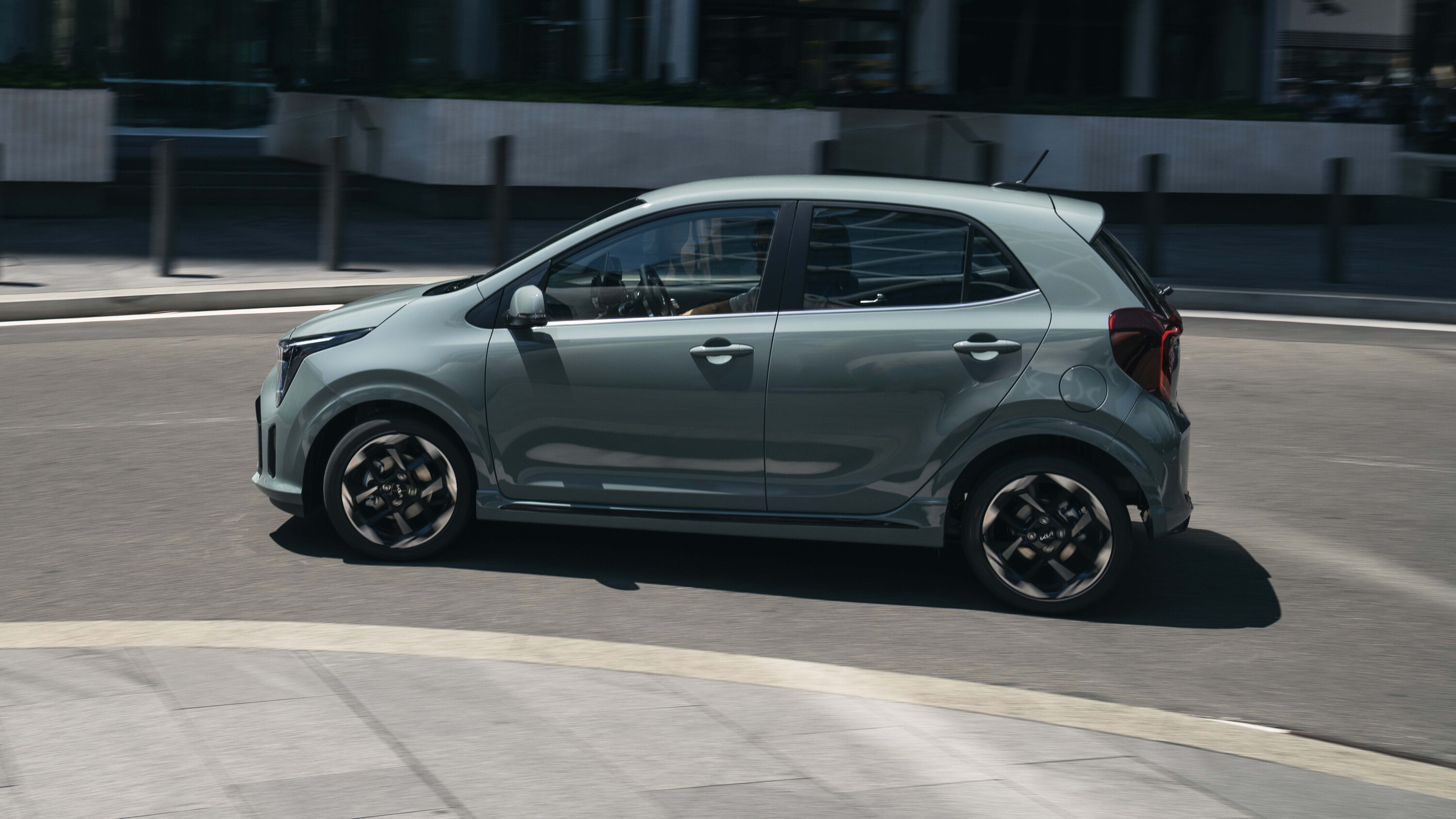
The ride doesn’t suffer too much from the bigger GT-Line wheel package but you can certainly feel the surface being transmitted to the cabin.
It’s not a plush ride, the GT-Line, but it is comfortable and, despite the fact this car has a tiny 2400mm wheelbase it doesn’t get too pitchy over bumps. You get a well-controlled and cosy-enough experience in the city, and it is quite nicely settled at highway pace.
The steering offers a direct and natural feel, and perhaps more importantly, it’s easy to park; despite the fact no model has front parking sensors, it’s a tiny thing so is pretty simple to pilot into a spot, either nose-first or by reverse-parallel.
Road noise is the biggest consideration you might need to keep in mind with this car. If you do a lot of commuting at higher speed, especially on coarse-chip roads, you might find it to be hard work.
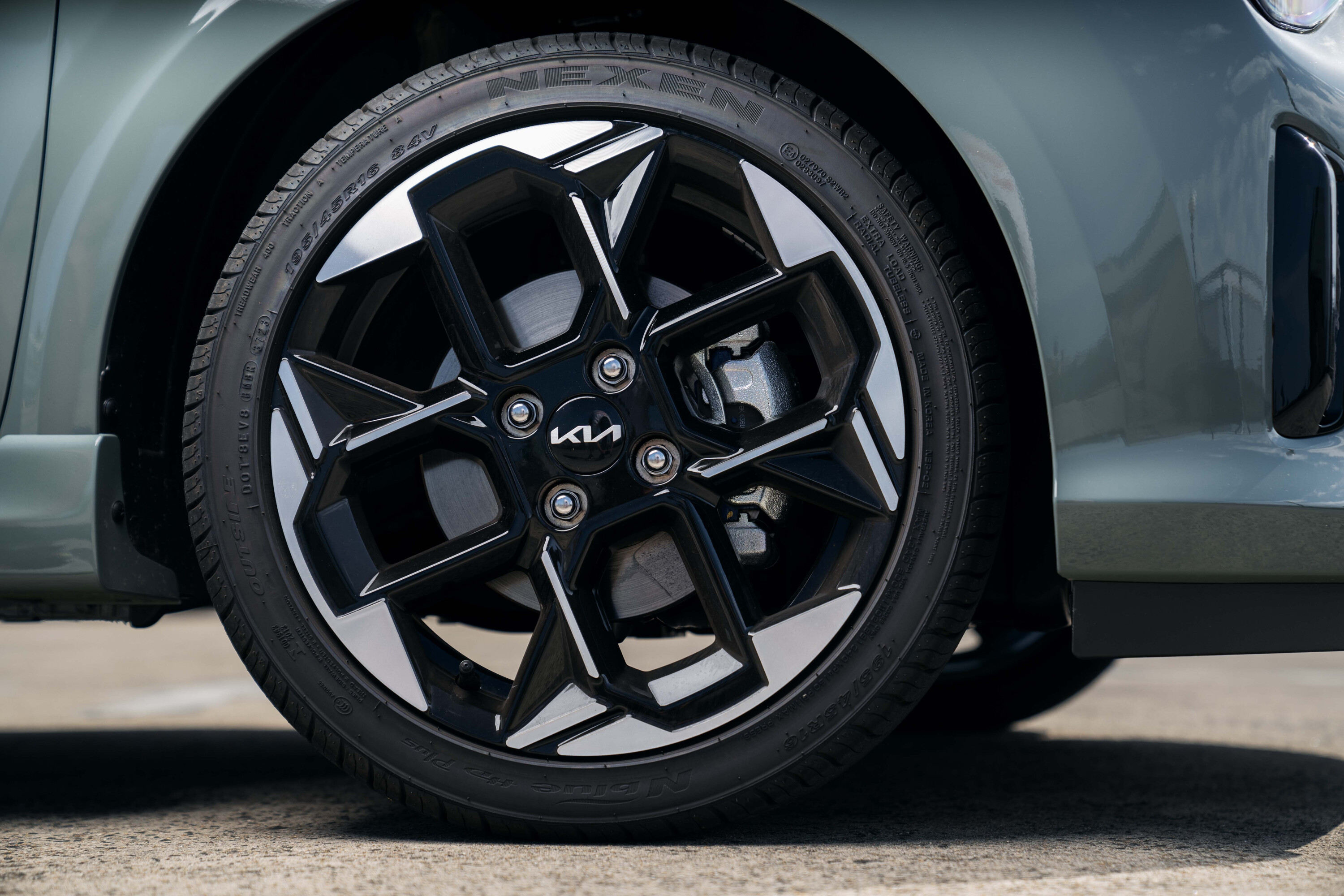
Key rivals
You could put an MG3 on the list, and it’s a bit bigger. But it’s not as refined and has no active safety tech. It is cheaper, though (from $19,990 drive-away).
Otherwise, a Suzuki Ignis (from $22,490 drive-away) could be an interesting option, or the classic but ageing Fiat 500 petrol model (from $27,220 before on-road costs) if you just need something small. Neither of those has active safety tech, either.
Mazda 2, then? It starts at $22,720 plus on-road costs for the Pure hatch with a manual gearbox.
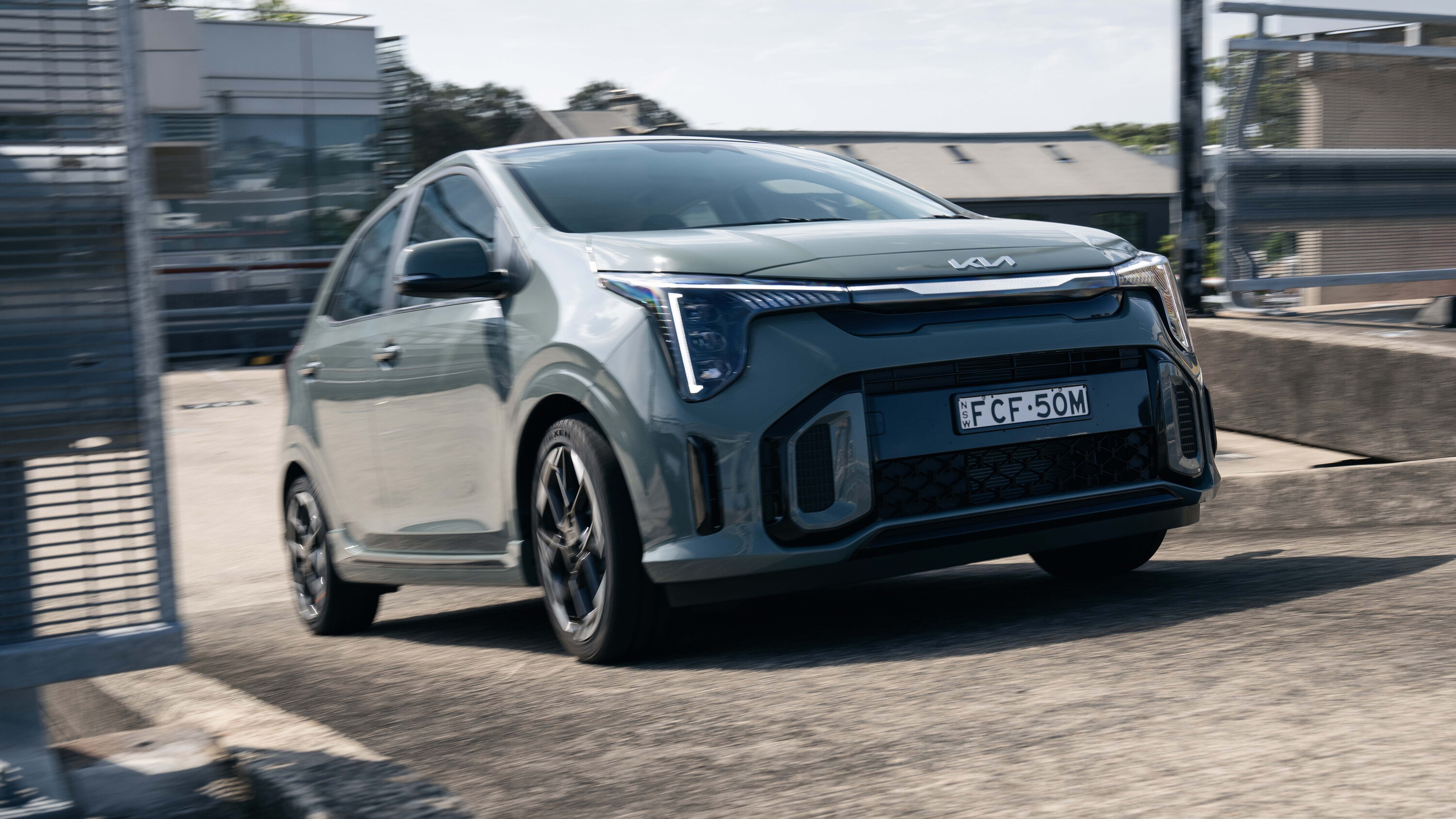
Should I put it on my shortlist?
If your shortlist is based on “brand-new, small, cheap, long warranty and advanced safety tech”, then yes.
The Picanto is the only remaining choice at the very bottom of the price spectrum.
| 2024 Kia Picanto specifications | |
|---|---|
| Powertrain | 1.2-litre 4-cyl petrol |
| Max power | 62kW |
| Max torque | 122Nm |
| Drivetrain | 4-spd auto or 5-spd manual, front-wheel drive |
| Fuel consumption | 5.4-6.0 litres per 100km (combined) |
| Price | from $17,890 to $21,290 plus on-road costs |
Things we like
- Assertive new look
- Worthwhile added safety tech
- Fully digital instruments
- Easy to drive and park
Not so much
- The best one – GT – is dead
- Meagre powertrain
- Prices up quite a bit
We recommend
-
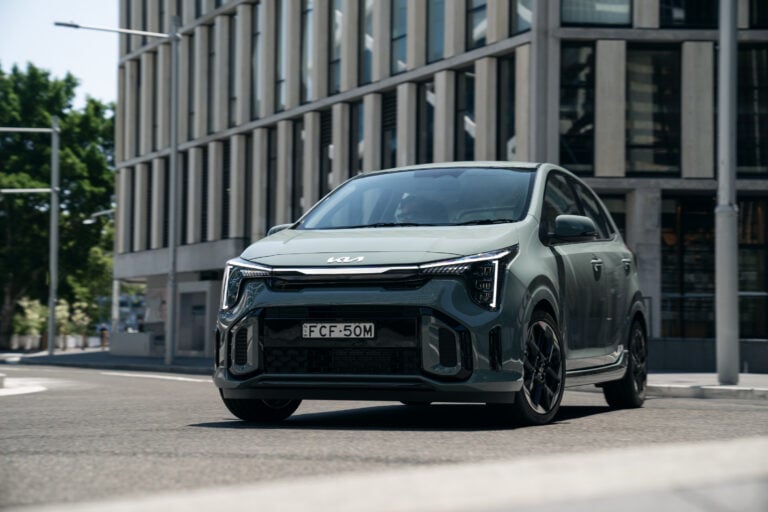 News
News2024 Kia Picanto pricing and features
Kia’s updated micro hatch receives a revised look and more active safety features. Prices are up, and the flagship GT has been axed
-
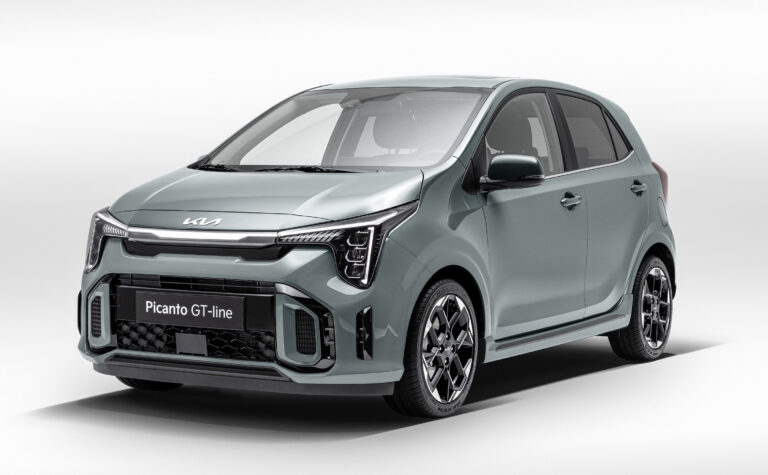 News
News2024 Kia Picanto facelift revealed, due here later this year
Kia has unveiled a major update for its six-year-old Picanto light hatch with EV9-inspired looks and more tech
-
 News
NewsNew car calendar 2026: All the new cars coming to Australia next year
Here’s the WhichCar by Wheels guide to all the new cars that will launch in Australia in 2026. Check back in regularly for updates...



